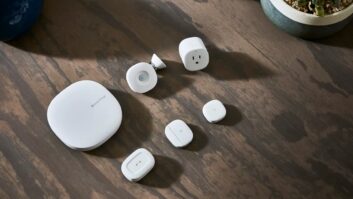
Smart-home products are rolling out to the masses as consumers look for ways to simplify their daily lives.
According to a recent survey from Parks Associates, more than 40 percent of U.S. broadband households plan to purchase a smart-home device in the next 12 months. Yet we are not likely to see consumers rushing out to replace all of their conventional household appliances, lightbulbs, thermostats, security cameras, and door locks with smart devices overnight.
This is partly due to their being cost-prohibitive for many, but also because consumers don’t understand the benefits of a home full of smart appliances. To realize the opportunities, retailers and manufacturers must share the task of communicating this trend to consumers and educate them about the value of innovative devices if they are to justify their premium price tags.
Working with major retailers such as Home Depot and Best Buy, I’ve found four common misconceptions consumers face when purchasing smart home devices that retailers should address:
1. “These products are just gadgets.” Many consumers mistakenly perceive smart home appliances as toys — fun to experiment with, but lacking clear purpose or value. This message needs to be changed now more than ever, as today’s smart-home marketplace is still largely being defined and is still open to new interpretations. Retailers can change customer perception by sharing the practical benefits behind smart-home products, such as increased home security, user control and convenience.
2. “You have to be a technology expert to use smart-home products.” It is a common fear that smart products will be difficult to set up and use, but in reality these products are designed to make life easier. This seemingly confusing technology steers consumers back to the comfort of old devices. To compel consumers to enter unfamiliar territory, retailers need to make the transition process natural and comfortable by providing great in-store experts and after-sale support. Not only will continual support boost immediate sales, it will also increase customer satisfaction and long-term loyalty.
3. “Smart-home products always come with a monthly subscription plan.” People shy away from smart-home products because they don’t want another subscription fee to pay every month. The reality is that most products have basic services that require little to no fees, and retailers need to do a better job breaking down this informational barrier.
4. “Every product has a different platform and a different App.” This is true and false. As the smart-home industry is growing rapidly, dominant platforms are starting to emerge and most people will only pick one or a few applications to utilize. Retailers can prevent consumers from feeling overwhelmed by helping them sift through the crowded market to find the platform that will best suite their individual needs. Yet again, the barrier to smart-home product adoption is broken through consistent consumer support and education.
The potential of the smart-home industry is exciting, but ultimately its success falls to retailers and manufacturers working together to better educate consumers.
Mark Honeycutt is CEO of Jiawei USA, the parent company of the Maximus Smart Security Light.












